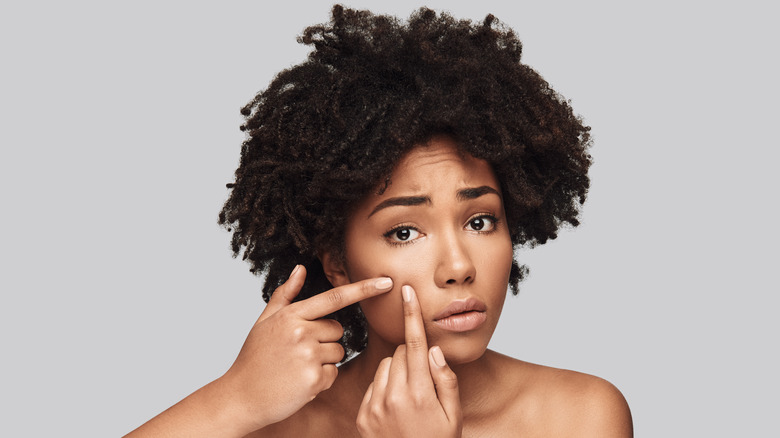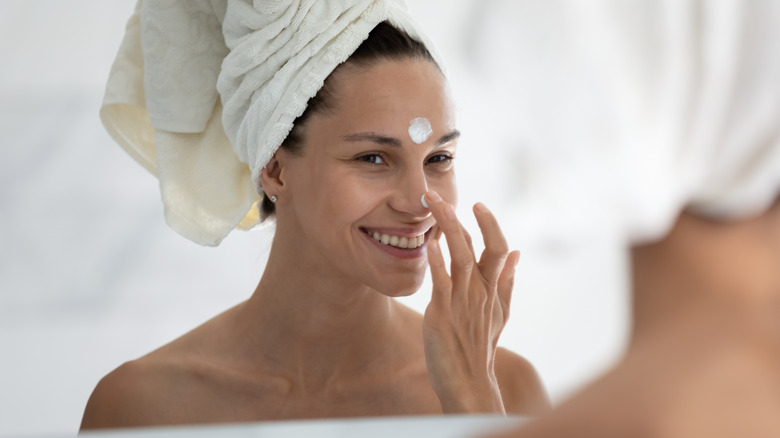The Real Reason You Shouldn't Squeeze Sebaceous Filaments
Look closely at your face in a mirror. Can you see tiny gray dots on your nose or chin? If you thought those were blackheads, you'll be happy to know that they're actually harmless features of your skin called sebaceous filaments (via Healthline). These tiny pores with hair-like structures coming out of them actually help keep your skin moisturized. And because they're supposed to be there, squeezing them can actually cause more harm than good.
Just under the surface of your skin are small glands that produce an oily substance called sebum. Sebaceous filaments help the sebum move from the sebaceous glands to the surface of your skin where it helps to lock in moisture and keep your skin healthy. Occasionally, a sebaceous filament gets blocked when your skin produces too much sebum. When this happens, skin cells, bacteria, and sebum build up and cannot move out of the pore. As they come in contact with the air, these plugs turn a dark color and are commonly known as blackheads (via Medical News Today). These black, bumpy spots look and feel very different from sebaceous filaments, which are often yellow or light gray.
Try these solutions before you squeeze
While it may be tempting to try and squeeze or remove sebaceous filaments, it's important to remember that they're doing an important job. When you squeeze them, they are just going to fill right up again within a few weeks (via Byrdie). Extracting sebaceous filaments can cause permanent damage to your skin, leaving behind scars that may be even more noticeable than what you started out with (via Medical News Today). Plus, you could end up stretching out your pore and making it appear even larger. But don't worry – if you want to prevent those sebaceous filaments from turning into problematic blackheads, there are a few products you can use to keep things clear.
Keeping a healthy skin care routine will help stave off blackheads and reduce the appearance of sebaceous filaments by ridding your skin of excess oil, dirt, and dead skin cells. Alpha- and beta hydroxy acids can be used as exfoliators to keep clogs from forming (via Healthline). Glycolic and salicylic acid are two good over-the-counter examples of these. Another product that can be purchased over-the-counter or prescribed by a doctor is retinol. This helps with exfoliation and uncovers new skin underneath dead cells.
So, if you find yourself tempted to give those little dots on your face a quick squeeze, just remember that there are safer, more effective ways to make them less noticeable.

